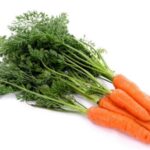Young goose meat is tender and weighs at least 2 kg or more, while older geese weigh more. Regardless of weight, goose meat has a fragrant flavor and is considered best when roasted. Although often classified as white meat, goose meat is inherently darker in color. You may even find that goose meat resembles beef.

Goose meat is versatile and can be prepared in a variety of dishes. (Illustrative image)
Is goose meat better than chicken or duck meat?
Goose meat is more nutritious than chicken or duck meat, and it also tastes better than chicken and other poultry. It is estimated that goose meat contains 96 milligrams of cholesterol per 100 grams of meat and is considered quite high in cholesterol. Therefore, adults and those with health issues such as diabetes should avoid cholesterol-rich foods.
Goose meat is fattier than chicken. For every 100 grams of goose meat, there are 2.79 grams of saturated fat. The legs and skin have a higher fat content, while the breast has less.
Nutritional value of goose meat:
Goose meat is a good source of vitamin A (retinol), which is beneficial for the skin. It also contains high levels of vitamins B1, B2, B3, B5, B6, and B12. Goose is an excellent source of protein, helping you build lean muscle and maintain a healthy weight. If you’re looking for a good alternative meat that provides enough protein, skinless goose meat offers 22.8 grams of protein per 100 grams.
Goose meat contains essential amino acids such as threonine, isoleucine, leucine, lysine, methionine, cystine, phenylalanine, tyrosine, valine, arginine, histidine, and alanine. Amino acids are chemicals that help your body produce protein and ensure the normal functioning of your entire body. Research has shown that essential amino acids such as glycine are found in goose meat. A study conducted on mice showed that supplementing their diet with glycine increased their lifespan by about 25%.
The two main types of minerals found in goose meat are macrominerals and trace minerals. Your body requires macrominerals such as calcium, phosphorus, magnesium, sodium, potassium, chloride, and sulfur in large amounts. Trace minerals like iron, manganese, copper, iodine, zinc, cobalt, fluoride, and selenium are only needed in very small amounts.

Roast goose is a popular dish due to its leanness. (Illustrative image)
Additionally, goose meat contains calcium, which is essential for the development of strong bones and teeth. It also aids in muscle relaxation and is crucial for the normal functioning of nerves, blood clotting, and maintaining healthy blood pressure and immune system function. Goose meat is rich in iron, which is a component of hemoglobin, a protein found in red blood cells that carries oxygen from the lungs to other parts of the body.
Goose meat is a good source of magnesium, which is necessary for protein synthesis and a healthy immune system. Phosphorus, important for strong bones and teeth, is also found in goose meat. Potassium in goose meat helps maintain fluid balance, nerve conduction, and muscle contraction. Sodium aids in fluid balance and nerve conduction, while zinc is necessary for protein synthesis and genetic material, contributing to taste perception, wound healing, fetal development, and sexual maturation.
Goose fat, a little-known healthy food
Goose fat is rendered from goose and contains oleic acid, a type of fatty acid that helps lower cholesterol and prevent heart disease. Its color ranges from cream to yellow. When heated, goose fat is liquid, but at room temperature, it is semi-solid and has a firm, smooth texture. Goose fat has a melting point of 25°C to 37°C (77°F–99°F) and a smoking point of 190°C (375°F). When chilled, it can be stored for up to three months.
Why You Should Be Combining Plant-Based Oils and Animal Fats in Your Diet
Plant-based oils and animal fats are essential sources of dietary fat, regularly used in cooking. However, the benefits of combining these two ingredients when preparing meals are often overlooked. Join us as we delve into this intriguing topic and uncover the reasons why incorporating both plant-based oils and animal fats in your cuisine is a culinary practice worth exploring.



































